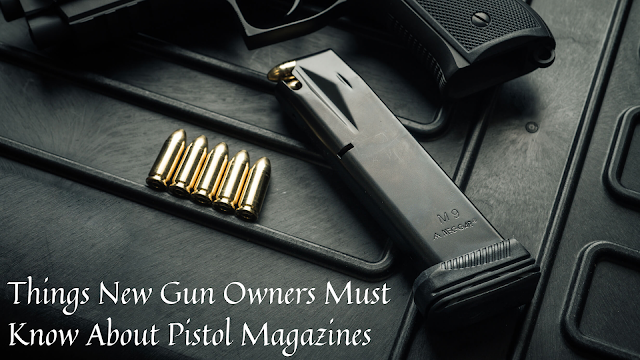The firearm magazines have a long history and a wide range of categories, making them one of the most popular cartridge feeding mechanisms. There are, however, several main types of weapons magazines in New Zealand, each with numerous sub-categories and variations.
In this overview, we'll look at four fundamental varieties: tubular, box, rotary, and drum magazines, as well as a few newer forms that appeared in the late twentieth century but, are no longer widely used.
Tubular Magazine
Though most modern firearm magazines are box-style, the original magazines were fixed "tubular" magazines used on lever-action rifles and early bolt-action rifles. Tubular magazines are usually found in the buttstock or under the barrel (lever- and pump-actions) (the Spencer carbine and rifle). While tubular firearm magazines exactly suit the contour of the guns, they have certain drawbacks, such as only being able to use soft-point or flat-tipped bullets, having a smaller capacity, and being slower to reload.
Box Magazines
The development of smokeless propellants and smaller caliber cartridges topped with more ballistically oriented bullets led to the creation of the box magazine. The cartridges are stored side by side in single or double (staggered) rows in the box magazine, but there is also a casket magazine with a quadruple column. The most common way to reload guns is with box magazines, which come in two types: internal or fixed and removable box magazines.
Rotary Magazines
The rotary magazine method is quite old and is one of the five fundamental forms of magazines that have been utilized in the past. Otto Schonauer invented the spool or rotating magazine in 1885, and one of its older iterations was used in the Savage M1895 and Model 99 rifles. Rotary magazines are powered by a torsion spring that rotates a star-shaped rotor or sprocket. Rotary magazines, which can be either fixed or detachable, can safely use pointed (spitzer) projectiles.
Drum Magazines
Drum magazines are designed for select-fire and ever-hungry full-automatic guns and are installed from below the gun. The drum magazine concept is quite old, with various variants in drum magazine forms and capacities, thanks to its cylindrical construction. The cartridges are still sided by the side, with bullets pointing parallel to the axis, which is a frequent feature.
This design is well-known for its capacity when compared to box magazines, but it also comes with a higher total weight and a shift in the firearm's balance.
Pan Magazines
A pan magazine was another sort of high-capacity magazine used for suppressive fire from automatic guns. It resembles drum magazines in appearance, but it is mounted on top of the pistol and operates differently. The cartridge layout is the second difference from a drum magazine. Unlike drum magazines, which have rounds organized parallel to the axis of rotation, pan magazines have cartridges positioned perpendicular to the axis of revolution.
Horizontal Magazines
The horizontal magazine is another top-mounted magazine that is distinctive in that it sits above the weapon. The magazine holds the rounds at a 90-degree angle, and the feeding system rotates the cartridges before chambering them. This magazine is designed to lie flat against the gun and parallel to the barrel, and two rows of cartridges lie at right angles to the barrel in a horizontal magazine. Horizontal magazines are far more balanced and comfortable to carry than box magazines, and they can accommodate a more significant number of rounds for their size.









Comments
Post a Comment